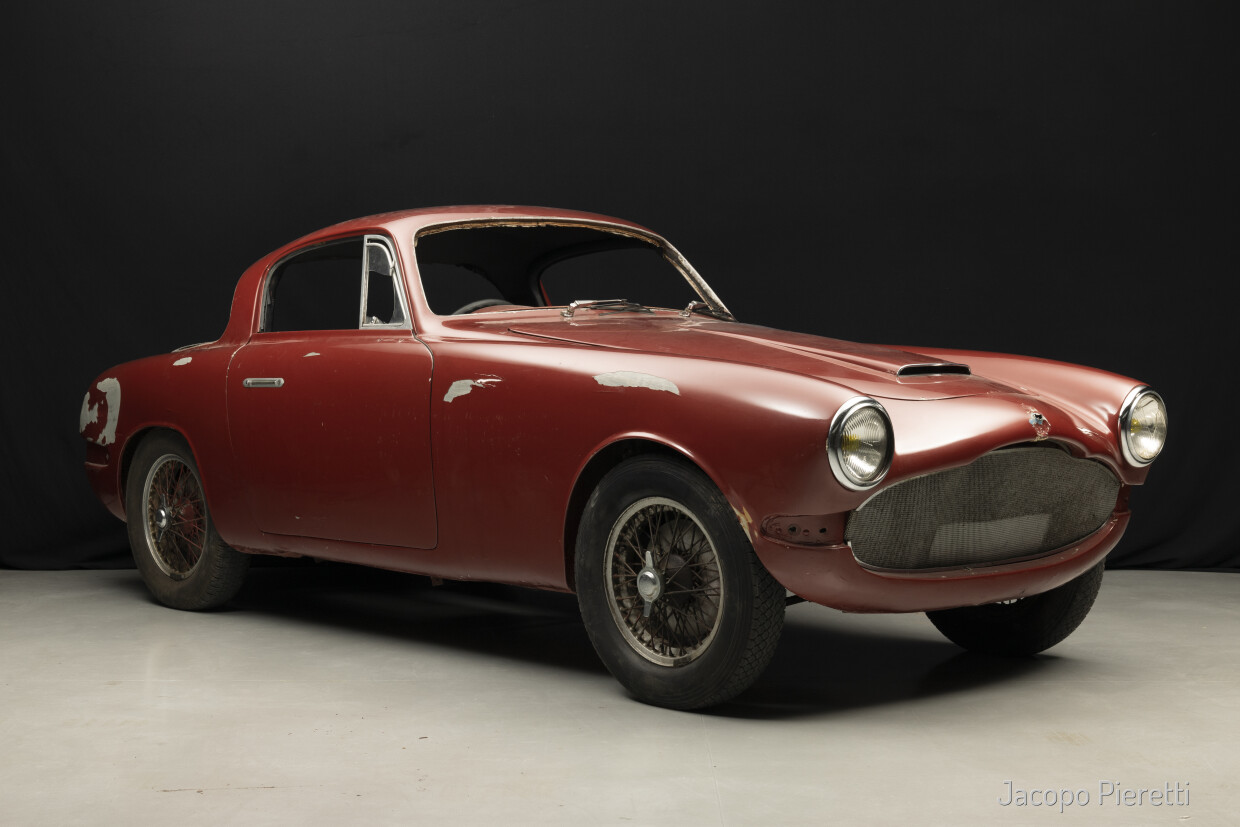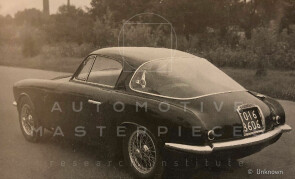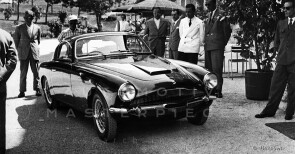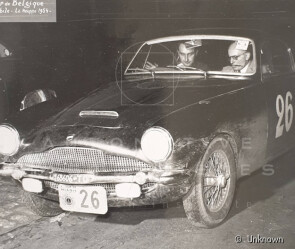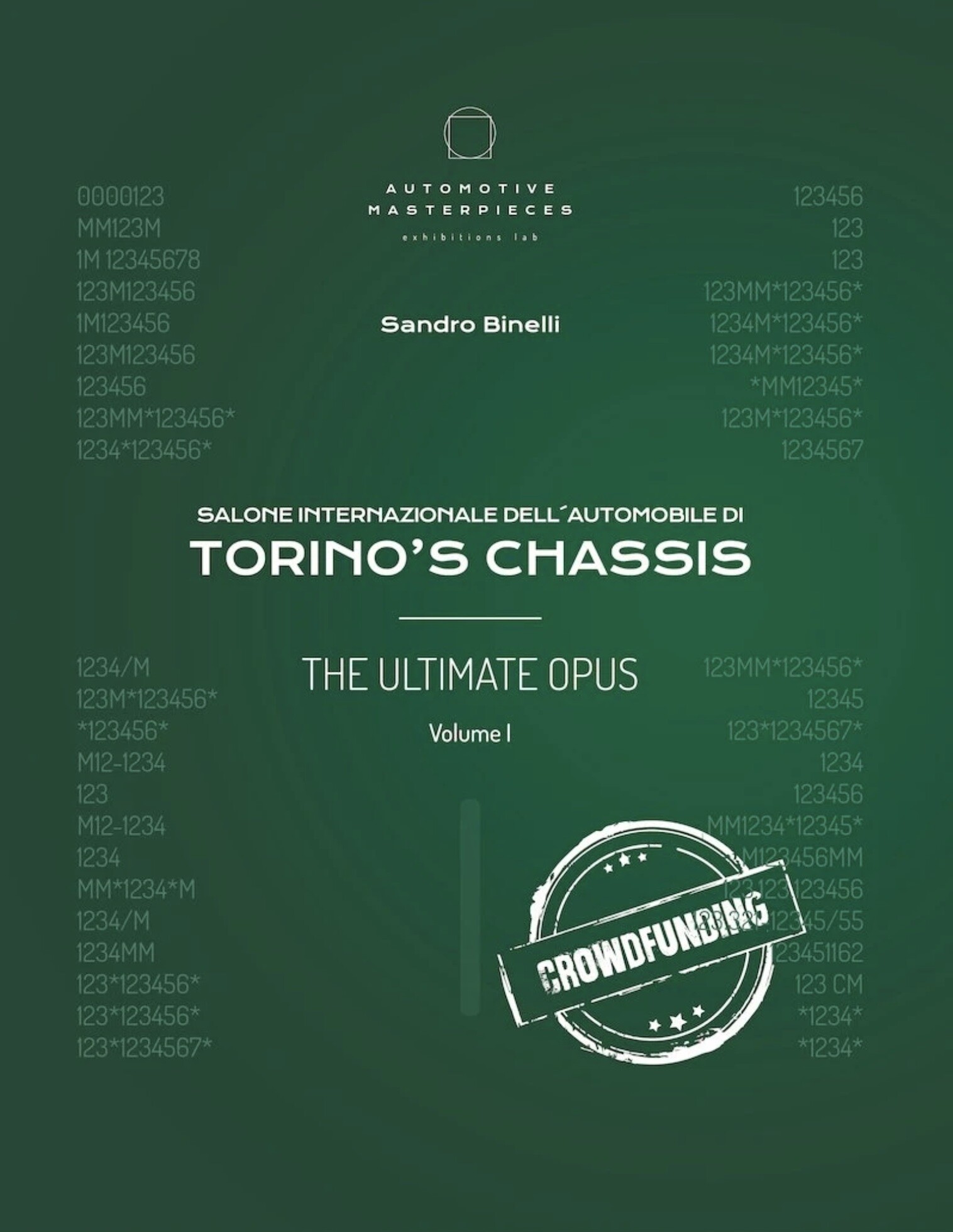
1954 Moretti 1200 Gran Sport
ON/OFF
Why am I an Automotive Masterpiece?
Giovanni Moretti began his career in the 1920s as a mechanic, repairing and selling motorcycles in Turin. His passion for mechanics quickly led him to build his own motorcycles and, later, complete cars. Moretti found rapid success, producing innovative designs across a portfolio that included small city cars, commercial vehicles, and even open-wheeled racing cars. A distinctive feature of Moretti as a manufacturer was his ability to design and produce vehicles without relying, as many other small manufacturers of the time did, on mass-production models such as Fiat’s. Instead, he directly competed with them. Targeting the same market as the Fiat 500 Topolino, in 1949 he developed a new inline four-cylinder engine with a displacement of 602 cc, capable of producing 21 hp at 4,500 rpm, paired with a four-speed gearbox. The chassis, also newly designed, was of a semi-unitized construction, consisting of a floor panel welded to a pair of sheet-metal side rails. This structure was similar to that of the Topolino but had no elements in common with it. Compared to Fiat, Moretti’s cars offered superior performance and were built with greater attention to detail, but they came at a higher price. The origin of the design of the Moretti 600 is unknown, though it is highly likely that Mario Revelli di Beaumont contributed to the styling. In 1951, the 600 was updated, though the identity of the designer remains uncertain. The second series featured a redesigned front end with a central bulge on the hood, echoed by the upper edge of the grille. This design motif became a recurring feature in subsequent Moretti models styled by Giovanni Michelotti well into the mid-1950s. This fact supports the hypothesis that Michelotti was responsible for the facelift. Moretti was highly attentive to promotion and sought to boost the visibility of his cars by engaging them in endurance ventures that received strong media coverage. However, the quality demonstrated by his cars was not enough to offset the deterrent of their high prices within their market segment. A major breakthrough came when Moretti upgraded his engine, first increasing its displacement to 750 cc (the category limit for racing) and then equipping it with a twin-cam cylinder head with hemispherical combustion chambers—first for a single-seater and later for a berlinetta and a barchetta. The performance was remarkable. The prices remained high, but the target market had shifted: now Moretti was catering to the world of competition cars and high-performance grand tourers.
The Moretti 1200 represents a significant example of Italian automotive craftsmanship from the 1950s, combining elegant design, advanced engineering, and limited production. Always in pursuit of new ideas—and likely driven more by image-building than real commercial prospects—Moretti developed a second version of his twin-cam engine (originally designed as a 750 cc unit) with increased dimensions. The new engine featured a displacement of 1.2 liters, achieved through a 72 mm bore and a 74 mm stroke. This time, the debut did not occur in a sports car but in a grand touring sedan, which Moretti entered in the 1953 Concorso d’Eleganza in Stresa. Designed for road use, the 1200 engine had a low compression ratio to favor reliability and torque, producing 52 hp at 5,500 rpm—more than the equivalent Fiat 1400 but on par with the Moretti Sport 750. The chassis was newly developed, featuring a platform structure with independent front suspension comprising double wishbones and a transverse leaf spring, while at the rear, it used a rigid axle with leaf springs and telescopic shock absorbers. The car’s dimensions were larger, with an extended 2.4-meter wheelbase. It was equipped with aluminum drum brakes on all four wheels. The body, designed by Giovanni Michelotti, was a two-door sedan seating four to five passengers. However, as with the 750, Moretti did not limit production to a single body style and gradually introduced different versions tailored for various uses. In 1954, he expanded the 1200 lineup to include a new commercial vehicle and a more performance-oriented grand touring version—the 1200 Gran Sport. This high-performance model featured an upgraded twin-cam engine producing 80 hp, thanks to twin Weber dual-barrel carburetors and an aluminum body designed by Michelotti and built by Carrozzeria Motto. Produced in a semi-artisanal manner, the few units of the 1200 Gran Sport inevitably exhibited slight variations in details, such as lighting configurations and the placement of the fuel filler cap. Some models also featured grille designs with differing proportions. The grille itself reinterpreted Moretti’s classic styling with a central bulge, adapting it to a sleek, low-profile front end. One of the most distinctive design elements was the car’s mid-height bumper grille, a feature that set it apart from its contemporaries. The proportions of the car were well-balanced, with a long, taut hood leading to a compact cockpit, achieving a harmonious interplay of linear and rounded forms. The design was clean and refined, free from the excessive ornamentation seen in previous Moretti models. A standout feature was the panoramic rear window, which added to the car’s distinctive appeal. The aesthetic result was highly successful, and the 1200 Gran Sport made a grand debut at the 1954 Salone dell’Automobile in Torino. Its initial reception was overwhelmingly positive, leading to its presentation at prestigious concours d’elegance events, including Cortina d’Ampezzo in July and Rimini in August. However, the launch of the Fiat 600 in 1955 placed Moretti in an increasingly difficult position. The number of cars sold, which had reached 253 units in 1954, plummeted to less than half, forcing Moretti into an entirely different business approach. Production of the 1200 in its various versions soon ceased. By the late 1950s, Moretti, unable to compete with major manufacturers, stopped producing complete vehicles and shifted focus to creating Moretti-modified versions of mainstream models. Unfortunately, this strategy ultimately proved unsustainable, leading to the company’s closure in 1989.
The Moretti 1200 Gran Sport, chassis no. 5004, is arguably the most significant example produced among the very few built. This particular car was unveiled at the Salone Internazionale dell’Automobile di Torino in April 1954 and subsequently showcased at the concours d'elegance in Cortina d’Ampezzo and Rimini later that same year. The example is the only right-hand-drive known to have been produced. The car's ownership was officially registered only on August 11, 1954, in the name of Moretti itself, which then sold it on August 21 to its first private owner, a certain Lurelli, for 1 million lire. The car was registered with Torino plates but was soon entered in major races in French-speaking countries. In October 1954, it participated in the Tour de Belgique, followed by the Rallye International du Maroc in December. By May 1955, the car was on the starting grid of the Grand Prix de 24 Heures de Paris, though it never managed to place. Only in November 1956, Italian registration documents recorded its official withdrawal from circulation for permanent export. In photographs from the following years, the car appears with French plates. The license plate departments indicate locations near Paris: 95 (Val d’Oise, Île-de-France) in the 1970s and later 78 (Yvelines, Versailles) in the 1980s. By the 1970s, images show chassis no. 5004 modified, featuring a racing livery and London-Mexico Rally plates; however, no concrete records confirm its actual participation in the event. Unfortunately, the car then fell into a period of decline before being preserved. Fortunately, after the 2000s, it is believed that a restoration process began, culminating in March 2022, when the car was displayed at Techno Classica Essen at the Galerie Le Damiers stand of Christophe Pund and subsequently sold to a private collector.
